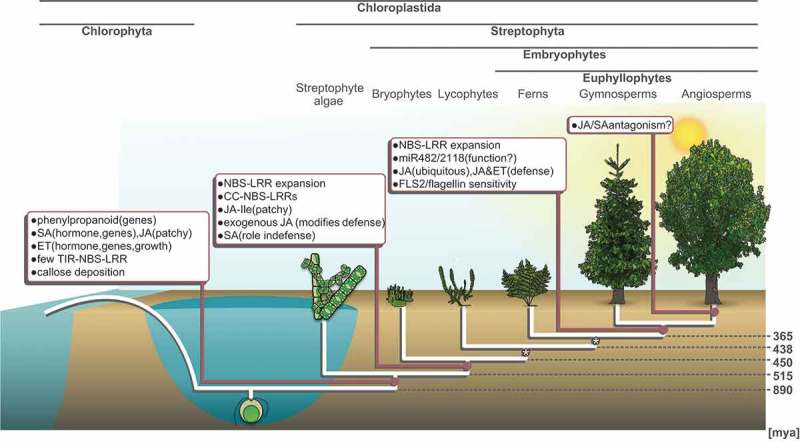Figure 1.

Key phytopathogen interaction factors across the trajectory of streptophyte evolution. Schematic cladogram (white lines) of the Chloroplastida depicts the deep split of the green lineage into Chlorophyta and Streptophyta about 900 million years ago (divergence times based on Morris et al. [45]). The Streptophyta encompass the paraphyletic streptophyte algae and the monophyletic land plants (Embryophyta). Land plants are likely >500 million years old and consist of the non-vascular bryophytes and the ~430 million year old clade of vascular plants, encompassing lycophytes and euphyllophytes. The euphyllophytes are the clade of ferns, gymnosperms and angiosperms (the latter two are the seed plants). Boxes highlight when – along this trajectory – signaling factors in plant defense are thought to have evolved; brackets further specify the type of data and/or functional significance of a given factor. The asterisks indicate nodes for which data are limited. JA, jasmonic acid; JA-Ile, jasmonic acid-isoleucine; SA, salicylic acid; ET, ethylene; NBS-LRR, nucleotide binding site-leucine-rich repeat; TIR-NBS-LRR, Toll-interleukin 1 receptor-nucleotide binding site-leucine-rich repeat; CC-NBS-LRR, coiled coil-nucleotide binding site-leucine-rich repeat; FLS2, FLAGELLIN SENSITIVE2.
